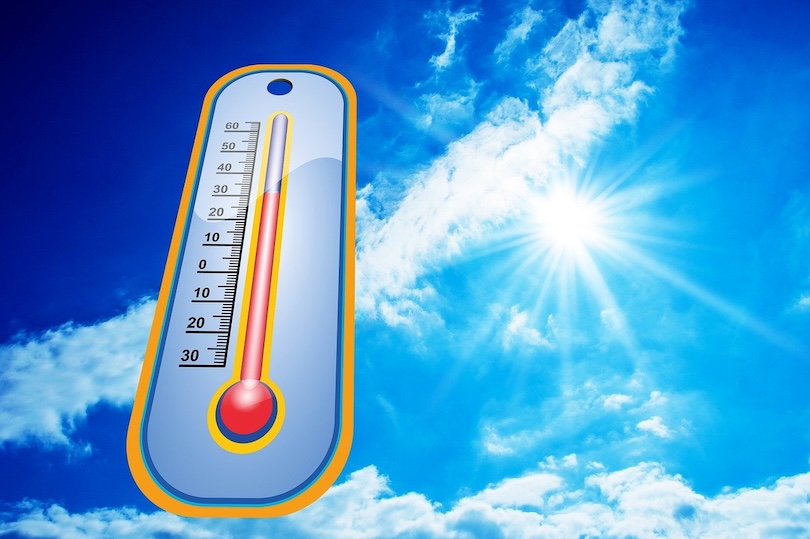As summer settles in, so does a silent hazard-working in high temperatures. Every year, workers across multiple world wide industries face real dangers from extreme heat, often underestimated by employees and employers until it is too late.
Taking as example U.S., in 2022 alone, over 436 work-related heat illnesses were reported in the construction sector, and 34 led to fatalities, according to the U.S. Bureau of Labor Statistics. But these are just the reported cases. Many more go unrecorded-mild cases of dehydration, heat cramps, or fainting spells that workers brush off or hide to avoid slowing down the job.
If you’ve ever tried to power through a summer afternoon in full PPE or worked inside a sweltering engine room, you know the toll it takes. This talk isn’t about theory-it’s about staying healthy and alert on the job, and maybe saving a life while you’re at it.
What Makes Working In High Temperatures So Dangerous?
Unlike a visible hazard, extreme heat creeps up on you. You might feel fine one minute, then suddenly dizzy, confused, or short of breath the next. In high humidity, sweat doesn’t evaporate as efficiently, so your body loses its natural cooling mechanism. And when you’re focused on getting the job done, it’s easy to ignore the early warning signs until is becoming to late.
Here’s what happens when things go too far:
- Heat Cramps – Muscle spasms caused by salt loss
- Heat Exhaustion – Heavy sweating, nausea, and fatigue
- Heat Stroke – Life-threatening condition with confusion, loss of consciousness, or seizures
A Simple Self-Check: The Urine Color Method
One of the simplest and most effective ways to check your hydration level is by looking at your urine color.

Make it a habit to check throughout the day, especially in hot environments. This simple action can prevent serious health risks.
Water Isn’t Enough: Use Mineral Powder Mixtures
When you sweat, your body loses more than water-it loses essential minerals like sodium, potassium, and magnesium. Rehydrating without replacing these minerals can still leave you fatigued and foggy.
Here’s what works best:
- Add mineral powder or electrolyte sachets to your water
- Choose low-sugar or sugar-free mixes
- Keep extras in your tool bag or locker
These powders are inexpensive, easy to carry, and can make a major difference in how you feel throughout the shift.
Breaks Based on Temperature and Humidity Index
Don’t rely on the clock alone. The Heat Index-a combination of temperature and humidity-shows how hot it really feels and helps determine safe work-rest cycles.

Use a weather app or site-based monitor to track the Heat Index and plan accordingly.
Dress Smart to Beat the Heat
While full PPE may be required, there are still ways to manage heat exposure:
- Wear light – coloured, moisture-wicking base layers
- Use cooling neck wraps or ice inserts where allowed
- Rotate out of hot areas during breaks if possible
Even small adjustments can help lower your core temperature and reduce fatigue.
Know the Warning Signs-In Yourself and Others
Heat-related illness often starts subtly. Be on the lookout for:
- Dizziness, headache, or nausea
- Irritability or confusion
- Skin that is red, dry, or has stopped sweating
- Slurred speech or unsteady movement
Always check in with your team. One question-“You feeling okay?”-can make all the difference.
Report Immediately-Don’t Wait for It To Worsen
Many workers try to tough it out, but pushing through heat stress can be deadly at some point when our body will collapse while working in high temperatures environments. If you or a coworker feel off, report it immediately to a supervisor, medic, or safety officer. Early reporting leads to quicker recovery and avoids escalation.
Lessons Learned Example – Share Your Story
A technician working inside a wind turbine nacelle in Texas once began feeling lightheaded and skipped steps in a routine maintenance task. With internal temperatures exceeding by far the normal temperatures, he nearly collapsed. A colleague noticed his unusual behaviour and called for help just in time.
That day changed his mindset forever-he now hydrates aggressively, uses electrolytes, and checks in regularly with his team.
Daily Action Checklist That You Should Follow
- Start your shift by performing or attending a specific toolbox talk for working in high temperatures hazards.
- Start hydrating before the shift.
- Check urine color regularly.
- Add electrolyte powder to your water.
- Track heat index and plan breaks.
- Dress for heat stress reduction.
- Report symptoms early-don’t delay. See the medic immediately. Working in high temperatures must not be ignored.
- Only the medically fit persons are allowed working in high temperatures environments.
Working in High Temperatures Needs Much More Awareness
Working in high temperatures is not just uncomfortable-it’s potentially fatal if ignored. With the right knowledge, hydration strategy, and team awareness, you can stay safe while keeping productivity high.
This summer, increase your awareness to working in high temperatures environments, share your lessons learned with the others. Don’t wait until someone passes out to take heat seriously. Start with yourself-and look out for each other.
Important
The toolbox talks must be always a dialog and not a monolog. You need to be sure that all your team has a clear understanding of the discussed topics. ALWAYS ASK FOR FEEDBACK – THIS WILL HELP and WILL PROVIDE VALUABLE INPUTS!

Leave a Reply